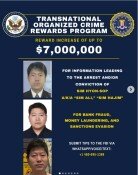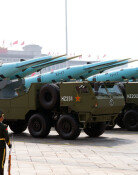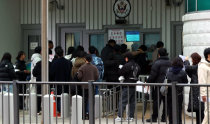Recklessness in unilaterally moving ahead to create police supervisory bureau
Recklessness in unilaterally moving ahead to create police supervisory bureau
Posted July. 25, 2022 07:50,
Updated July. 25, 2022 07:50
A group of police station chiefs across South Korea issued a statement last Saturday to call the Ministry of the Interior and Safety to hold a plan to create a police supervisory bureau and set up the rules of command that the interior minister can apply to the chief of the National Police Agency. Fifty six out of 630 senior superintendents of the same level as police station chiefs made an appearance at a meeting venue while 133 joined online. A total of 357 senior superintendents in offline and online settings sent wreaths of hibiscus flowers or the symbol of the South Korean police. Just one and a half hours after the meeting, former Ulsan Jungbu Police Station Senior Superintendent Ryu Sam-young was suspended while participants in the offline meeting faced inspection for disobeying a dissolution order. This is an unprecedented instance in the history of the South Korean police.
Interior Minister Lee Sang-min plans to push forward with a bid to create a police supervisory bureau in just two and a months since his inauguration by helping an enforcement decree pass this weeks’ cabinet meeting. Following the National Police Agency separated from the National Police Headquarters of the Interior Ministry in 1991, the Government Organization Act excluded affairs concerning the police from the Minister of the Interior and Safety’s work scope. Even with a police supervisory bureau coming back in 31 years, the ministry did not bring it to the National Assembly but went for an enforcement decree. It did not even wait until the police collected opinions internally. Added to this, although the period of prior announcement to listen to public opinions is usually supposed to last 40 days, the ministry only reduced it to four days, claiming that this matter is irrelevant to the daily lives of the public. It makes little sense that there is some level of the hastiness of setting up a police supervisory bureau.
Saturday’s meeting of police station chiefs did not feature any picketing nor protest. The purpose of the meetup was to exchange and gather their opinions indoors. In response, the ministry warned meeting attendees that they will face disciplinary measures for not fulfilling the duty of obedience as per the State Public Officials Act, since which there has only been a growing opposition to the ministry’s decision. This act is applied not only to the police but also to all other public officials. For example, even when junior prosecutors, senior prosecutors, chief prosecutors and supreme prosecutors each held meetings to respond to the National Assembly’s action to pass a bill to remove the prosecution’s investigative role completely, the former Moon Jae-in administration did not consider taking any disciplinary measures on those who attended the gatherings. To be sure, public officials are not supposed to go against the duty of obedience. However, it is a non-sensical situation where they are even restrained from voicing their opinions in the face of a critical change to the command system of their organization.
Any controversy over illegitimacy may be dispelled only when the legislative process is put in place on the work scope of the Interior and Safety minister and whether the minister is in command of the chief of the National Police Agency. In case where improvements in the system in force are under review, some level of consideration has to be paid to how vulnerable the police has been to an unlawful order by those in power just as seen when the police tortured Park Jong-chul, a Seoul National University student, and whitewashed the incident. This is why any preventive measures should be considered as well. If a more-than-30-year-old police system awaits a revamp, fundamental changes should be made to make sure that the police is controlled in the interest of the public not on the side of figures of authority.





![[오늘과 내일/우경임]교육부 장관인가, 교사부 장관인가](https://dimg.donga.com/c/138/175/90/1/wps/NEWS/IMAGE/2025/12/26/133045801.1.png)

